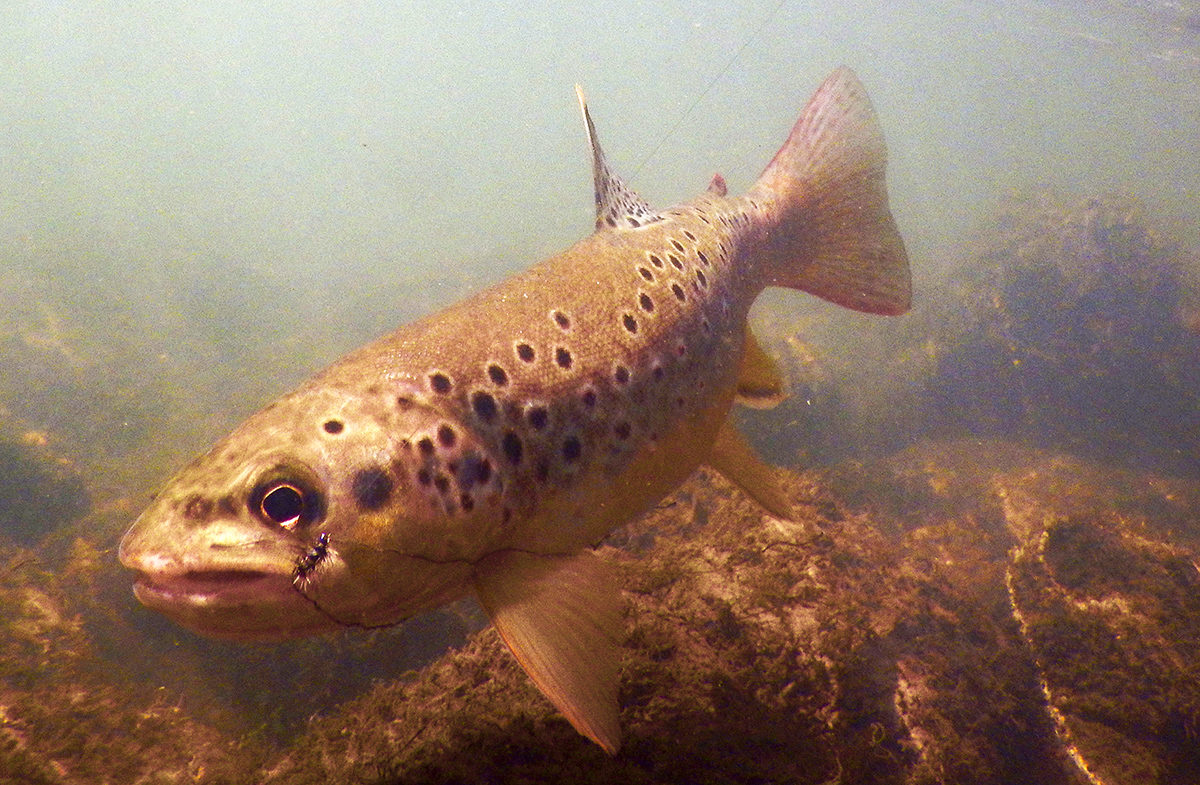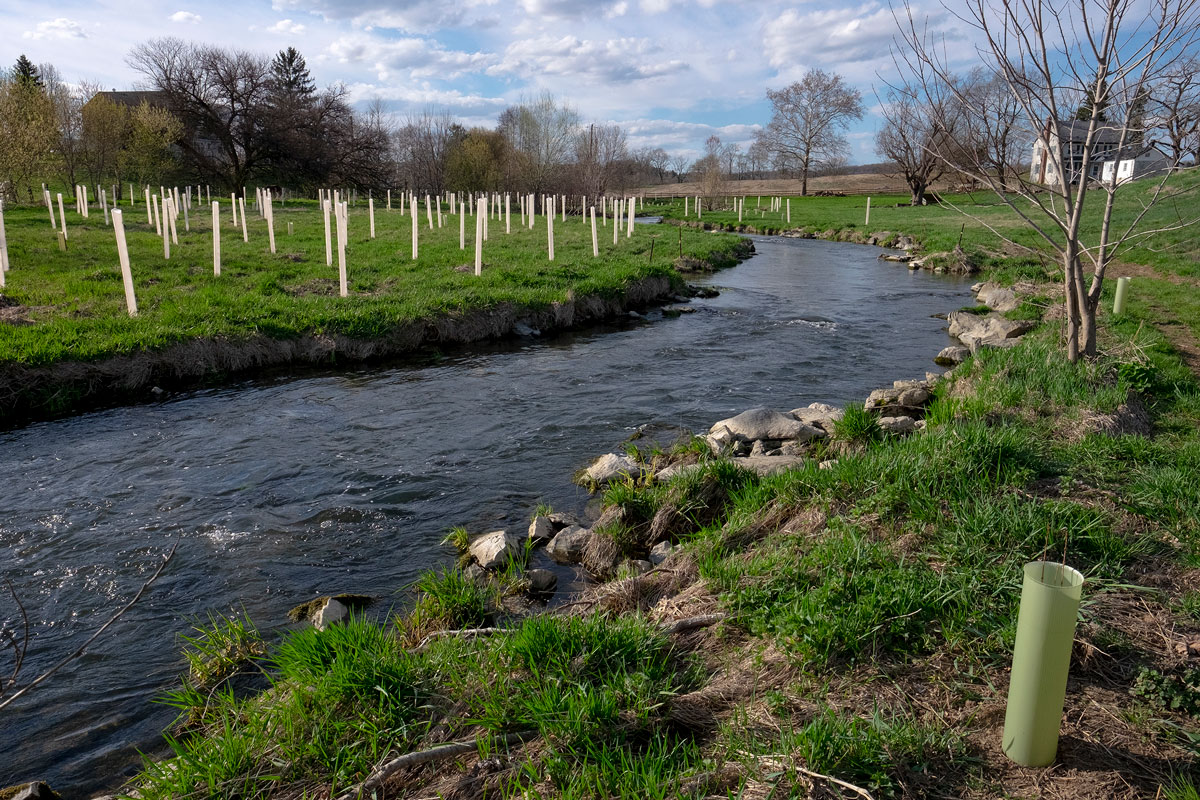Anglers are campaigning to update the designations of some Pennsylvania waterways to reflect the exceptional status of their wild trout populations and water quality
Four times each year, the Pennsylvania Fish and Boat Commission proposes streams to be added to the Class A Wild Trout and Wild Trout lists. Right now, there are 24 Wild Trout Streams that represent the best of our best waters. Among those eligible for protection during this comment period include Still Creek in Schuylkill County, Clear Run in Adams County, and tributaries to Nesquehoning Creek in Carbon County. These outstanding waters positively affect surrounding communities through increased economic activity and improve the natural, scenic, and aesthetic values of the state.
Pennsylvania sportsmen and sportswomen have a chance to influence this process and seal the deal for our best trout streams—here’s why you should take action today.
The Economic Power of Trout Waters
With 86,000 miles of streams and about 4,000 inland lakes, Pennsylvania is home to some of the best publicly accessible fishing that the East Coast has to offer, including phenomenal trout and bass fishing. With opportunities like these, it’s no wonder that 1.2 million Pennsylvanians fished their local waterways in 2020, helping contribute to the state’s $58-billion outdoor recreation economy.
Since 2010, the Pennsylvania Fish and Boat Commission has worked with sportsmen and local universities to distinguish our best waters through the Unassessed Waters Program. Based on the UWP’s evaluation, stream sections that meet a set of criteria are eligible for certain protections. For example, streams that have abundant populations of wild rainbow, brown, and brook trout can be eligible for Wild Trout Stream or Class A Stream designations. Protecting these streams ensures that the outdoor recreation industry continues to thrive and that future generations can enjoy the same (or better) fishing opportunities.
Tackle shops and fishing guides are among the businesses that make up an important part of the robust outdoor recreation industry in Pennsylvania. And giving special consideration to the best wild trout streams supports these small businesses. “When I worked in the local fly shop, the Class A list provided a great reference to point people in the right direction to find trout water,” says Matthew Marran, a flyfishing guide and former fly shop worker in the Delaware River Basin. “As a guide, I depend on Class A waters to put clients on wild trout with consistency and confidence. And I’m seeing more and more people ask when booking to fish exclusively for wild trout.”

Why Does a Designation Matter?
In these cases, what’s in a name really matters: Wild Trout and Class A streams qualify for additional protections from Pennsylvania’s Department of Environmental Protection, including the limitation of activities around these streams that would degrade water quality. The Wild Trout Stream title designates a water as a Coldwater Fishery and protects surrounding wetlands from development. Similarly, streams that qualify for the Class A designation get additional recognition as high-quality waters, which restricts in-stream discharges and guards against habitat degradation.
These designations from the PFBC are critical to helping the state manage and protect fish populations, especially as demands on Pennsylvania’s water resources continue to increase. When you consider that roughly 40 percent of streams across the state are NOT suitable for fishing, swimming, and/or drinking water, according to the DEP, it makes sense to safeguard the exceptional waterways that already meet top standards and support outdoor recreation that drives our economy.
Fortunately, sportsmen and sportswomen understand the importance of this process. A TRCP survey found that 92 percent of Pennsylvania sportsmen and women support designating streams when they meet the right criteria.

What You Can Do to Help
Pennsylvania’s hunters and anglers have an important opportunity to conserve more critical streams. If we don’t speak up, these exceptional waterways could easily be degraded and eventually lost to pollution.
Take action now and tell the PA Fish and Boat Commission that you value these protections for clean water and fish habitat.
This blog was originally posted in November 2019 and has been updated for each quarterly public comment period. The current comment period ends on March 24, 2024.
Top photo by Nicholas A. Tonelli; other photos by Derek Eberly.







How much will this cost and where is the money coming from to pay for it?
I cannot speak for PFBC, but my assumption would be that the actual cost of implementing these classification changes would be virtually nil other than the normal day to day data base updates, etc. within the concerned state agencies, in this case, PF&BC, PA-DEP and maybe a couple others. This is much more a simple act of designation than anything requiring significant regulatory action. It is also a very good thing, IMO…
I completely support the work done by the TRCP to upgrade trout streams in PA to protect them. I also support
the work of TRCP and other conservation organizations like Trout Unlimited etc. The current Trump administration
must stop the dismantling of effective government organizations that also further these goal and this administration must be opposed.
Where are these streams ?
be careful of this upgrade, because it will now and in the future restrict recreational activities along these waterways. as long as they are doing so well as is a better argument would be to to continue current designation.
Any time we can do something to protect our best trout stream we should do it. It’s always a lot cheaper to protect a high quality trout steam than to try to restore a degraded stream. Dollar for dollar its the best bang for the buck. If the Pa Fish and Boat Commission is recommending an upgrade to a stream, all the water quality, habitat evaluation and fish population studies (the work) has been documented on the stream. The idea of redesignation is to protect them from degradation, not restrict recreational use. As you indicate, out of all the streams is PA there is a very small percentage of streams that meet the criteria of supporting natural reproduction and being designated a wild trout or class A wild trout steam. They all deserve the added protection from degradation redesignation provides.